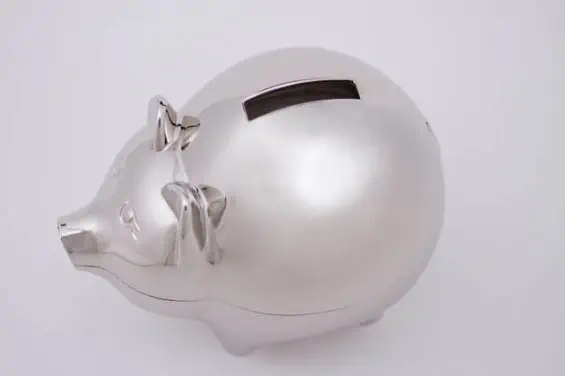The registered retirement savings plan (RRSP) contribution limit for 2024 is $31,560, up from the $30,780 amount in 2023.
If you have carried forward an RRSP contribution room from 2023, the RRSP contribution deadline is February 29, 2024. That is if you want to claim the deductions on your 2023 tax return.
Read on to learn how your RRSP contribution room is calculated, where to find your limit, and more.
RRSP Contribution Limit in 2024
The annual RRSP contribution limit for 2024 is $31,560. This is $780 higher than the limit in 2023, which was $30,780.
To contribute the maximum dollar limit in 2024, your 2023 earned income must be at least $175,333.
How is RRSP Contribution Limit Calculated?
Your contribution limit for the year is 18% of your earned income (employment income) in the previous year.
For example, if your total employment income in 2023 was $80,000, your annual limit is 18% of $80,000, which is $14,400.
You can contribute this amount directly to your RRSP account. If you have a workplace pension plan, the amount you can contribute is reduced by your pension plan contributions or pension adjustments.
Here is the maximum contribution limit for the last 5 years:
| Year | RRSP Contribution limit |
| 2024 | $31,560 |
| 2023 | $30,780 |
| 2022 | $29,210 |
| 2021 | $27,830 |
| 2020 | $27,230 |
How To Find Your RRSP Contribution Limit
Canada Revenue Agency will send you a Notice of Assessment (NOA) after processing your tax return for the year. This NOA will show your RRSP contribution room for the year.
RRSP contribution room, also called RRSP deduction limit, shows the total of your annual contribution limit, plus the contribution room you have carried forward from previous years. Pension adjustments and reversals are also reflected so you know how much money you can contribute for the year without penalties.
You can view your NOA online if you have a CRA MyAccount. Here’s how to open a CRA account if you don’t have one.
You can also call the CRA at 1-800-959-8281 or 1-866-426-1527 if you live in the Territories to get this information.
Pro Tips:
You need “earned income” to get an RRSP contribution room. This can be from employment and self-employment income, CPP disability payments, net rental income, and royalties.
Income earned from your savings or investment accounts does not count.
If you have contributed to a spousal RRSP, it lowers your contribution room.
What is the RRSP Contribution Deadline in 2024?
You can contribute to your RRSP account throughout the year.
To claim a deduction on your tax return for 2023 and receive a tax refund, the deadline date for contributions is February 29, 2024.
Contributions after this date can be claimed on your tax filing in 2025 (i.e. 2024 tax return).
Pro tip: The RRSP deadline is usually the first 60 days in the new year.
Related: Best tax filing software.
RRSP Deduction Limit vs. Contribution Limit
RRSP deduction limit and your RRSP contribution limit are often used interchangeably.
Your contribution limit is how much you can contribute to your RRSP in any particular year.
Broadly speaking, your RRSP contribution room is the maximum amount you are eligible to contribute each year after factoring in your annual limit (as announced by the CRA), pension adjustments and reversals, and unused RRSP contributions from previous years.
For example, if you had a $10,000 limit in 2023 (based on your 2022 tax return) but did not contribute. In 2024, if you have another $10,000 contributions limit (based on your 2023 income), your total contribution room or limit is now $20,000 ($10,000 + $10,000).
Your deduction limit is how much of your contributions you can claim on your tax return.
For example, if you contributed $10,000 in 2023, you can claim a deduction of $10,000 from your taxable income when filing your tax return for the 2023 tax year.
You will receive a tax refund for this deduction based on your marginal tax rate.
For example, if you contributed $10,000 and your marginal tax rate is 35%, you will receive a $3,500 tax refund if you claim a deduction for the full amount on your tax return. This is calculated as $10,000 x 35% = $3,500.
Here are the tax rates and brackets for all provinces.
What If I Over-Contribute to my RRSP?
If you exceed your RRSP contribution limit by $2,000 or less, there is no penalty. The excess amount is not deductible from your taxable income until you have the contribution room in the future.
If your contributions exceed your RRSP limit by more than 2,000, a 1% monthly tax penalty is charged on the excess amount until you withdraw it.
You must report excess contributions to the CRA (Form T1-OVP) and may be penalized further if you don’t file this form on time.
FAQs
You can open RRSP savings and investment accounts at a bank, credit union, or financial technology company like Wealthsimple.
RRSP contribution carry forward rules allow you to carry forward unused contribution room to future years. You can make RRSP contributions until you turn 71.
You can contribute up to your spouse’s contribution limit for the year if you have a sufficient deduction limit as the contributor. Your contribution to a spousal RRSP account cannot exceed your RRSP contribution room.
You can invest your RRSP using stocks, bonds, Guaranteed Investments Certificates (GICs), mutual funds, and Exchange-Traded Funds (ETFs). You can also use a savings account.
RRSP withdrawals for a home purchase under the Home Buyers’ Plan (HBP) are tax-free. You can withdraw up to $35,000 under this plan, but must recontribute it within 15 years. You can also withdraw RRSP funds tax-free to pay for school expenses incurred by you or your spouse. Up to $10,00 can be withdrawn each year, or $20,000 maximum, and it must be repaid within 10 years. This program is called the Lifelong Learning Plan.



